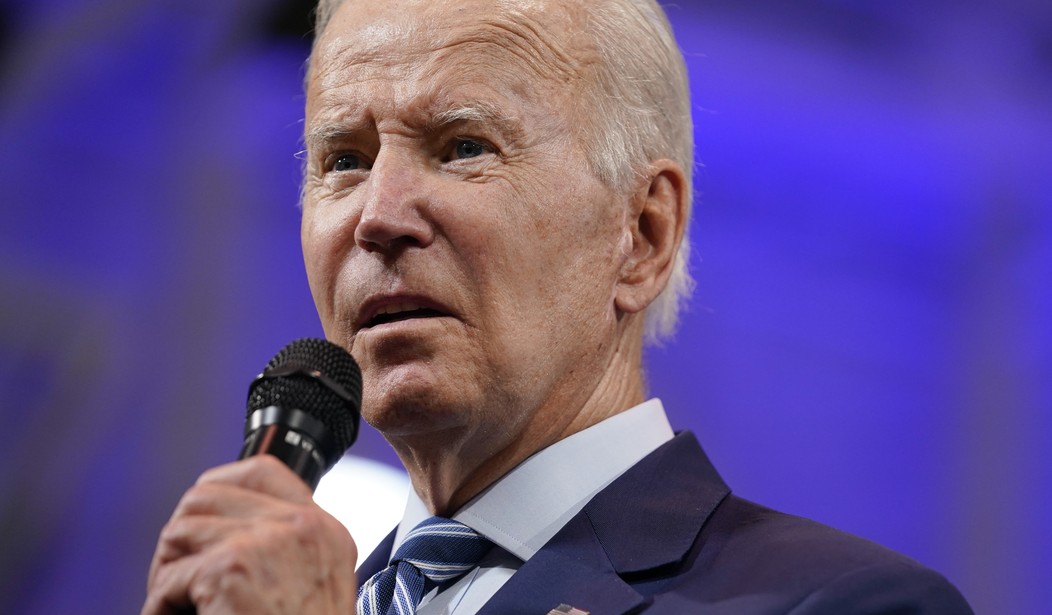President Joe Biden is preparing to give his State of the Union speech one week from today. He will no doubt attempt to tout all of his “achievements” during his first two years in office and speak glowingly of how things are going. (Despite a mountain of evidence to the contrary showing up in the news each day.) The state of our union is strong, he will no doubt say, and we’re moving forward. But how many rank-and-file Americans feel that’s true? According to a new Marist poll, that is a distinct minority opinion. When asked how “strong” America is today, a solid majority said that the country is weak. What 62% of them actually said was that America is either “not very strong” or “not strong at all.” And looking around the country today, perhaps they have a point. (Just The News)
A clear majority of Americans consider the nation to be in a weak position as President Joe Biden prepares to address the country in his upcoming State of the Union speech.
Nearly two-thirds, 62 percent, of respondents in a recent Marist poll indicated that the Union was either “not very strong” or “not strong at all,” compared with just 36 percent of those who said it was “strong” or “very strong.”
Independents held the most sour view, with 72 percent of that group concerned about the strength of the country, compared to 69 percent of Republicans and 48% of Democrats.
Looking deeper into the numbers, the growing partisan divide in America is clearly on the minds of many people. Slightly more than half of respondents said they were worried about “extremism” in the Republican Party and only a few percent less said the same about Democrats. And this is all happening on the watch of the guy who ran for office promising to be the “unity” president. How’s that working out for you?
I take no joy in sharing these numbers. Nobody wants to think of their country as being weak. But a unified society is stronger by definition and American society today is as divided as I’ve ever seen it, including during the “revolution of love” in the sixties. The government seems to have been hijacked by extremists with fringe ideas that few working-class Americans would embrace. And yes, there is some of that cropping up inside certain elements of the GOP as well as among the progressives.
And yet, I can’t help but feel that this is more a matter of perception than reality. As we discussed earlier today, the priorities of the public figures who are fighting the most loudly are not shared by the vast majority of Americans. Sure, most of us probably disagree with some of our neighbors on a variety of topics ranging from tax rates to foreign aid (if we think about such things at all). But deep down, I still believe that most people would like to see everyone doing well for themselves, with a rising tide truly lifting all boats.
So if you agree that average, working-class Americans are not nearly as divided as our political leaders and media mavens constantly tell us, then it’s fair to suggest that the country also isn’t nearly as weak as these poll numbers would suggest. But at the same time, perception shapes reality to a certain extent. When a majority of people perceive the nation as being weaker, does that translate into measurable results in the real world?
I would argue that it can and it does. People who believe that everyone else is divided and in conflict are arguably less likely to venture out and contribute more to the larger society, perhaps doing the bare minimum. The “quiet quitting” phenomenon comes to mind. They may also be less inclined to give to worthy charities and that’s precisely the trend we’ve been observing since the end of the pandemic. Charitable donations are currently at the lowest rate seen in decades. If you view the nation as being weak and divided, you probably won’t be quite as inspired to put on a uniform and go fight for your country. Sure enough, the military has been coming up short in its recruiting goals, with the Army falling short by a full 25% in 2022.
As depressing as it may sound, America is arguably “weaker” than it was just a few years ago. And there are observable metrics to back up that assertion. But this divisive environment isn’t the fault of Main Street, USA. It is propagated and amplified by the media and the activists and politicians who keep beating these drums. And if those people don’t find a way to check their worst impulses at the door, they could still drive us into a literal revolution, though it remains to be seen just how that would play out or what it would look like.








